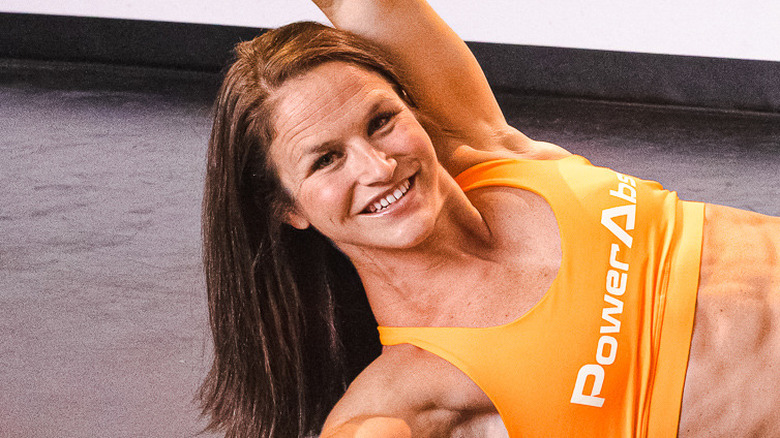Trainer Kari Pearce Explains Why You Need To Add Active Rest Into Your Workout Program - Exclusive
Kari Pearce is used to pushing her body to its absolute limits. She was a pro gymnast for nearly two decades, and when she retired from gymnastics, she moved on to competitive weightlifting and CrossFit. Pearce insists that tough, fast-paced workouts are the best way to build strength, endurance, and fitness, so when she works out, she works out hard. This philosophy inspired her to create her workout programs Power Abs and PHIIT, both of which have helped thousands of people get fit in just 10 minutes a day, five days a week.
However, Pearce is just as insistent about rest. She says that to get the best results from your workouts, you need to incorporate rest days and active rest days into your schedule. According to Pearce, if you don't take that time to recover, you're actually delaying your progress.
In an exclusive interview with Health Digest, Pearce revealed how often she takes rest days and how she incorporates active rest into her weekly workout schedule.
How much rest do you need?
Kari Pearce said that every workout program she builds includes at least two days of rest to give the muscles a chance to recover from the hard work they've been doing on the other five days. The American Council on Exercise (ACE) backs this recommendation — with one caveat. ACE recommends that you should rest after each workout until your muscles are no longer sore.
If you did a workout appropriate to your current fitness level, that should be one to two days of rest between workouts. However, if you're working out too hard and you experience significant muscle soreness for several days after working out, you should rest until that soreness is gone. Continuing to work out through the soreness can cause injury. For most people who are doing workouts suited to their fitness level, one to two rest days a week is perfect.
But rest day doesn't mean lying on the couch all day, not moving other than to tend to basic human needs. Pearce encourages her clients to take "active rest days," which involve easy, low-impact movement.
"Active rest days include taking walks, strength, foam rolling, and even yoga," Pearce explained. The key is not to push yourself on rest days — even active rest days. Move your body in ways that feel restorative and don't put additional stress on your muscles.
Sleep is essential
Kari Pearce also stressed the importance of getting enough sleep.
"Focus on sleep because that is such an important part of rest and recovery," she said. "Plus, the best thing about it is that it is free and you already do it. I aim for at least seven hours of sleep a night and suggest others to do the same."
Again, Pearce's recommendations are heavily supported by science. According to the National Academy of Sports Medicine, sleep is an essential part of any workout program. Several biological mechanisms crucial to metabolic function, hormone production and distribution, and muscle growth and repair take place while we're sleeping. When we don't get enough sleep, our bodies literally can't recover from workouts.
Additionally, when we work out intensely and don't get enough sleep over a long period of time, this can actually change the body's response to stress in ways that can eradicate all the gains we're trying to make during workouts. So in addition to taking rest days and active rest days every single week, make sure that you're clocking at least seven hours of sleep, more if possible.
Check out Kari Pearce, the award-winning fitness trainer who has taken the business world by storm by starting two successful fitness brands — PowerAbs! and PHIIT — by visiting her website.



